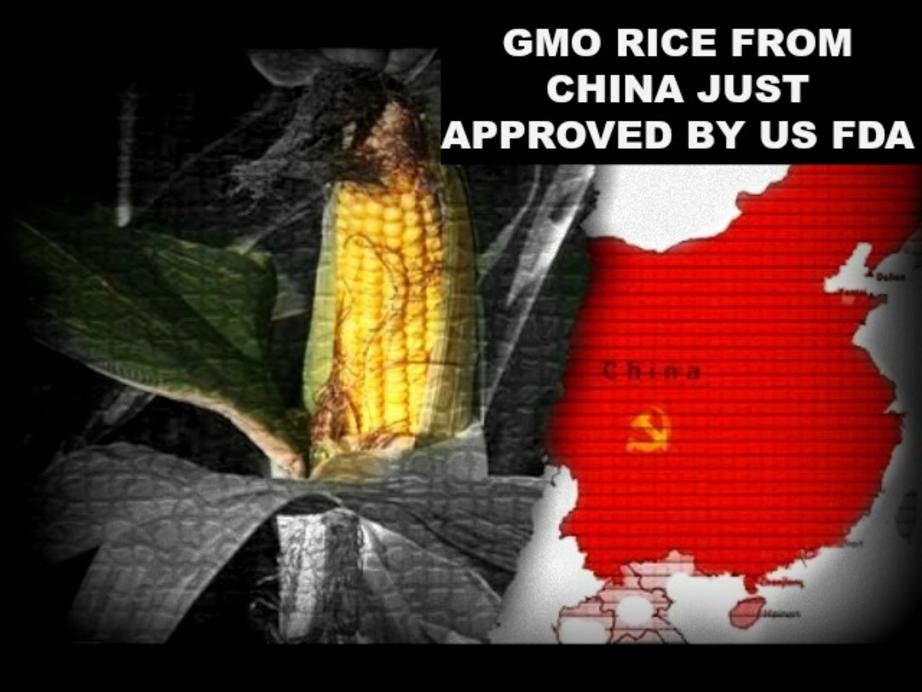First GM rice just approved by the US FDA
Will the first ever GM rice from China make its way to the American table soon?
As we reported last summer, Big Agri pulled some maneuvers and made major inroads in China despite major opposition from China’s people. Readers may be surprised to learn that Chinese citizens reject the notion of GMOs but they do. In fact, there is such a demand for organic there, that China is buying up arable land in other countries and trumpeting health campaigns to discourage meat and dairy consumption. Not only has this demand for better food caused food shortages there because of their issues with pollution, but it has also created a bevy of “fake organics” and questionable foods flooding other countries. Are we about to receive a flood of GM rice, too?
Now the FDA has essentially approved a product based on some data turned in by Chinese researchers. It did not conduct its own experiments. Although cultivation of this GM rice is not officially legal, the FDA stamp of approval was meant to set the ball rolling, and garner approval from other markets.
GlobalTimes.CN reports:
A genetically modified (GM) rice product developed by a group of Chinese scientists has acquired the US Food and Drug Administration (FDA) approval, the first such Chinese product allowed to enter the US market.
However, neither China nor the US has approved mass cultivation of the rice amid low acceptance from the Chinese public for GM food.
Huahui No.1 rice, developed by the Huazhong Agricultural University, is genetically engineered to resist a wide range of insects, thus reducing the use of pesticides.
Lin Yongjun, a professor at Huazhong Agricultural University and one of the scientists that developed the rice, told the Global Times on Monday that Huahui No.1 could not be grown in China as “the country has not conducted regional trials nor provided guidelines to examine genetically engineered rice.”
Lin said his team might consider growing Huahui No. 1 in Southeast Asian countries, “but our reach is limited and we hope the authorities can provide funding and legal support.”
Lin’s university received an email from the FDA on January 11 approving the rice.
The email, which was made public on FDA’s website, said, “Based on the safety and nutritional assessment Huazhong has conducted, it is our understanding that Huazhong has concluded that human and animal foods from Huahui No.1 rice grain are not materially different in composition, safety, and other relevant parameters from rice-derived human and animal food currently on the market, and that genetically engineered Huahui No.1 rice grain does not raise issues that would require premarket review or approval by the FDA.”
Huahui No. 1 was developed as early as 1998 and received a bio-safety certificate from China’s Ministry of Agriculture in 2009 – but the rice and other GMOs receive little acceptance by Chinese citizens. Commercial planting in China is restricted, so the university sought safety approval from foreign agencies since 2009 to prepare Huahui No. 1 for international markets.
Public reception of Huahui No. 1 is abysmal. Commenters allegedly said that the rice should be grown somewhere else or that if Americans approved it, then “sell it to the Americans.”
Luo Yunbo, an expert on GM products at China Agricultural University noted the Chinese Government’s hesitancy to work with GM cultivation due to the ire from the Chinese toward GMOs. He said,
The government wants to take its time on GM food for social stability reason. It has a three-step plan to gradually industrialize GM crops, first on inedible crops, then on vegetables and fruits and the last on staple food such as rice and wheat.
There is still a long way to go before the public accepts GM rice in the market.
So, while this rice is still in its preliminary stages, preparations for the international market are definitely being set in motion.

